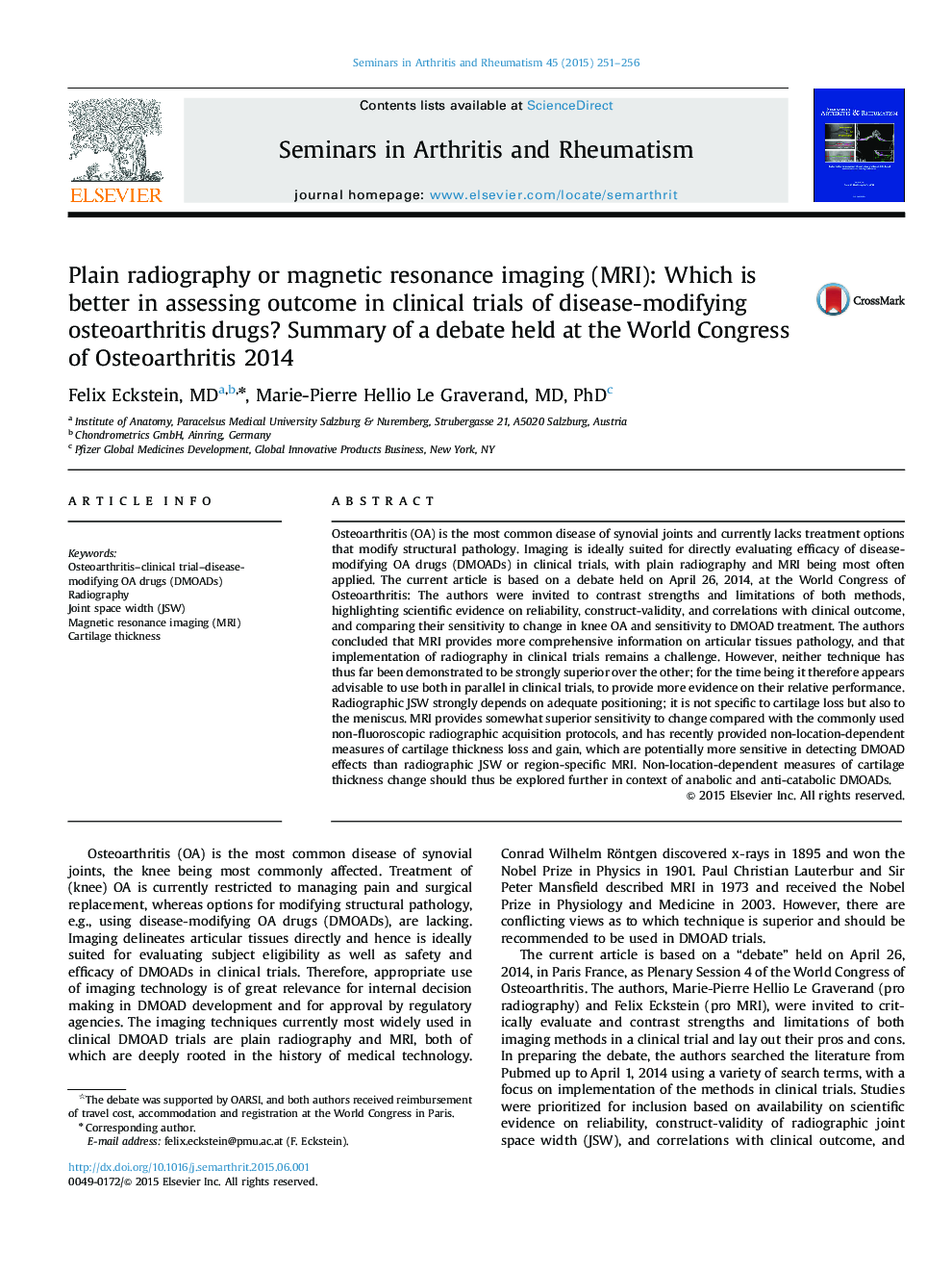| کد مقاله | کد نشریه | سال انتشار | مقاله انگلیسی | نسخه تمام متن |
|---|---|---|---|---|
| 5887586 | 1151734 | 2015 | 6 صفحه PDF | دانلود رایگان |

Osteoarthritis (OA) is the most common disease of synovial joints and currently lacks treatment options that modify structural pathology. Imaging is ideally suited for directly evaluating efficacy of disease-modifying OA drugs (DMOADs) in clinical trials, with plain radiography and MRI being most often applied. The current article is based on a debate held on April 26, 2014, at the World Congress of Osteoarthritis: The authors were invited to contrast strengths and limitations of both methods, highlighting scientific evidence on reliability, construct-validity, and correlations with clinical outcome, and comparing their sensitivity to change in knee OA and sensitivity to DMOAD treatment. The authors concluded that MRI provides more comprehensive information on articular tissues pathology, and that implementation of radiography in clinical trials remains a challenge. However, neither technique has thus far been demonstrated to be strongly superior over the other; for the time being it therefore appears advisable to use both in parallel in clinical trials, to provide more evidence on their relative performance. Radiographic JSW strongly depends on adequate positioning; it is not specific to cartilage loss but also to the meniscus. MRI provides somewhat superior sensitivity to change compared with the commonly used non-fluoroscopic radiographic acquisition protocols, and has recently provided non-location-dependent measures of cartilage thickness loss and gain, which are potentially more sensitive in detecting DMOAD effects than radiographic JSW or region-specific MRI. Non-location-dependent measures of cartilage thickness change should thus be explored further in context of anabolic and anti-catabolic DMOADs.
Journal: Seminars in Arthritis and Rheumatism - Volume 45, Issue 3, December 2015, Pages 251-256